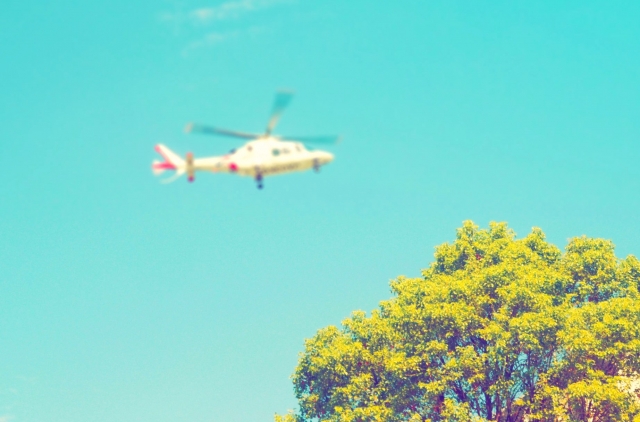Progressive disaster welfare

The term 'disaster welfare’ is an administrative and academic term. But, twenty years ago, I myself didn’t really understand it. The imagery of the word is ambiguous. It contrasts the image of something like Japan sinking and Godzilla attacking with that of familiar welfare.
After the Niigata-Chuetsu Earthquake, what I feared were without a doubt a major earthquake in the Tokyo metropolitan area, an eruption of Mount Fuji, and the Tokai earthquake. Hospitals in Ginza would undoubtedly be swept away by the tsunami. Rehabilitation hospitals at the foot of Mount Fuji might also be swept away by its lava. The government said lava moves at 40 kilometers per hour, so you can escape by car, but there’s no emergency means to transport 400 elderly patients and staff. It’s obvious there are limits to transporting them on mountain roads with a few ambulances.
There are also many care facilities near Suruga Bay in urban areas. They would be swept away by the tsunami. The reason I built many facilities in northern Kanto and northwest Kanagawa is because I chose regions that could be safe and serve as support facilities during a major earthquake. Facilities in places susceptible to disasters have wide ground floors, serving as lobbies or community centers.
The first facility established in Tokyo was a comprehensive development on the site of an elementary school, including a special nursing home, a geriatric health center, a facility for mothers and children, and a wide-area evacuation site as a disaster prevention park. They work together with the neighborhood association, fostering good relationships through festivals and conducting disaster drills together.
The ground floor of the facilities is barrier-free and seamlessly connected to the park. Since there’s a river nearby, there’s a large rubber boat in the lobby of the Tokuyo Home, ready for use by the Self-Defense Forces at any time.
In the park, a mini-helicopter can just about land. At that time, it was a development plan that squeezed out every bit of wisdom. Two days after the March 11 earthquake, three helicopters flew to the Lakeyama G nursing home in Kesennuma with relief supplies. But I couldn’t buy gasoline on the way back and ended up experiencing secondary distress myself. It’s embarrassing.
The response to the Noto earthquake this time, I wanted the Self-Defense Forces helicopters and ships to be dispatched all at once for the initial response. There may be reasons why this couldn’t be done, such as national defense or fear of tsunamis, but still, there are many things that don’t make sense.
This is because Japan’s administrative structure is meticulous and only prepares for peacetime scenarios. Look at the Roman Empire era. During wars and disasters, a dictator was chosen for a limited period.
In modern democratic countries, the prime minister should have full authority to take command at the forefront, but perhaps that’s impossible. The prime minister and the governor seem to just ride on top of the bureaucratic organization in peacetime.
The prime minister’s job isn’t just budget allocation. It doesn’t seem like the Self-Defense Forces ships are moving either. The Self-Defense Forces chartered private ships and dispatched them to ports on the peninsula, allowing evacuees to take showers.
Wouldn’t it be faster to transport victims to safety with Self-Defense Forces helicopters? Japan, like in the Edo period, seems to be stuck in endless meetings without taking any action no matter what happens. That seems to be the situation in Japan today.
There are guidelines for disaster welfare established by the government. This network consists of meetings and assemblies for coordination among various organizations. I don’t think these organizations are very well coordinated even in peacetime. It would be difficult to coordinate actions quickly even in wartime.
That’s why wide-area disaster support training is necessary even during peacetime. But it seems like only basic municipality-level disaster training and education are being conducted. First, I want the prime minister and governors to improve their insight and establish a support system equivalent to regional autonomy.
It’s not a situation where factions should be making noise. The Lakeyama Group is considering preparing a long-term support system from primary support by doctors and nurses to support by dietitians and physical therapists. Through online medical care systems, they will provide long-term living support in cooperation with doctors from all over the country, even without going to the disaster area.
Using small blood glucose meters, pulse oximeters, and simplified COVID-19 testers. Three special carts for COVID-19 countermeasures developed by Lakeyama G are also on standby. Since this mobile COVID-19 testing room is a vehicle, it can’t be delivered until the roads are restored. Couldn’t the Self-Defense Forces transport it with large helicopters or ships?
Furthermore, container houses with refrigerators and freezers are also under development, with the assistance of major frozen food company Cook Deli. Pouring in wisdom, money, and sweat. It’s because you have to think of yourself tomorrow. There’s a spirit of mutual civilian assistance, but we also rely on the power of the state.
Will a dictator emerge at times like these? It’s pathetic to even momentarily think that it’s okay. The media and scholars are also pathetic. But the most pathetic are the citizens who think so.
Pulse oximeter 98/97/97
Body temperature 36.4 Blood sugar 182
Thunderbird Minus 1.0 Koyama Medical Welfare Group Representative Yasunari Koyama
